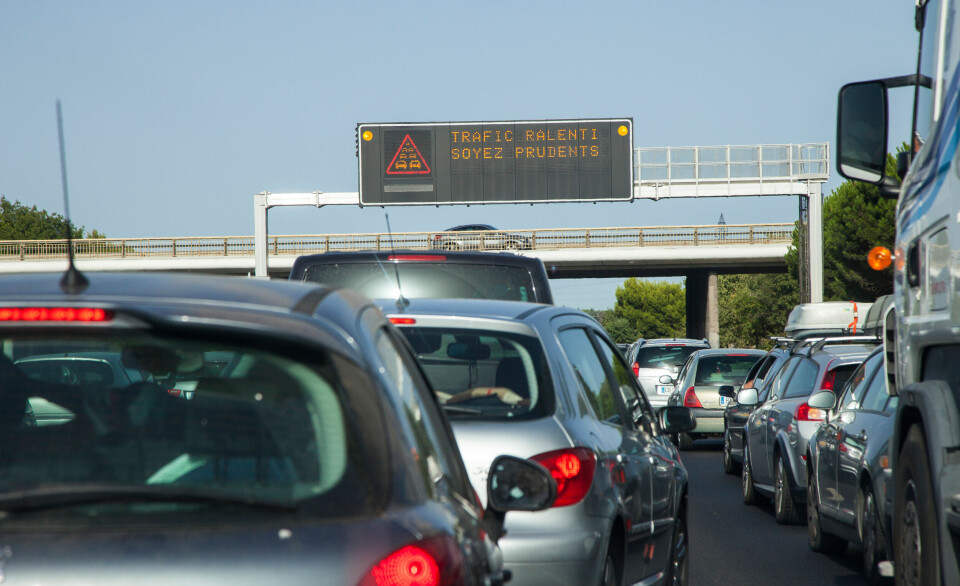-
Cold Christmas in France, but little chance of snow
High-pressure system will move into France from north-east at the start of next week
-
British ‘Puppet Master’ conman in French jail wins phones back on appeal
Robert Hendy-Freegard was given a six-year sentence after hitting two gendarmes with his car
-
Alleged British hacker in jail in France offers to help with police data breach
Recent attack targeted police files
What happened? Météo France explains record flooding
Météo France has explained why intense flooding has affected the south of France - becoming the worst recorded since 1891 - despite autumn rain storms being a common phenomenon in the region.

At least 11 people have been confirmed dead, nine people injured, and two people confirmed missing since Sunday night, when the flood waters first rose.
Thousands of homes are still without power, and a “catastrophe naturelle accélérée” has been declared by Prime Minister Edouard Philippe, who has visited the region.
Nous allons mettre en oeuvre la procédure de catastrophe naturelle accélérée et veiller à ce que l’ensemble des administrations concernées prennent les mesures qui s’imposent pour pouvoir accompagner tout ceux qui ont subi des dommages et ont été meurtris. #inondations11 pic.twitter.com/b79ZMJkRrT
— Edouard Philippe (@EPhilippe_LH) October 15, 2018
Water levels in the town of Trèbes reached 7.68m at around 7h30 on Monday October 15 - just lower than the record of 7.95m in 1891.
Three months of rain fell in just six hours. Over 700 firefighters, 200 gendarmes and nine helicopters were deployed overnight to help residents escape the rising water.
A Météo France “red” alert (the highest possible) was issued at 6h that morning.
Alert levels had been on the lower “orange” warning until then - a fact that has been criticised by a government spokesperson, who suggested that the orange warning was overused and that people “no longer took any notice”.
Why has the flooding been so bad this time?
Rain and storms for the Aude region and surrounding area are not unusual at this time of year.
When Météo France predicted “a rainy area over the whole of the eastern Midi-Pyrenees towards Roussillon and the east of the Languedoc”, it was not unprecedented.
As flood warning agency Vigicrues explained: “This is what we call an ‘épisode cévenol’ or intense ‘épisode méditerranéen’.”
It continued: “This is caused by the combination of hot [Mediterranean] sea at the end of the summer, and hot, relatively humid air currents crossing from the Mediterranean that then hit against the Massif Central and mountain areas.”
But conditions in the Aude were worse than expected due to the bad weather remaining unusually static over just one region.
As the local authorities explained: “Winds from the east and the west met above the Aude, blocking the stormy weather into just one area. The storm then poured out between 160-180mm of water around Carcassonne.”
The statement from Vigicrues continued: “The water levels rose very quickly in the first half of the night, and from there levels rose much more slowly. We are at the peak, which is the phase when the flooding is at its maximum.”
What is the current situation?
Already, damage appears significant.
In Carcassonne, fields and roads have been completely swept away, with many trees fallen over roads and muddy landslides causing further blockages.
In the commune of Villegailhenc, a bridge was swept away, while the waters were reported to have reached as high as 1m50 in people’s houses.
Roads and train lines are completely blocked between Narbonne and Carcassonne, with Narbonne train station unreachable.
Schools remain closed; residents have been recommended to stay at home; and preventative evacuations have taken place in Cuxac-d'Aude, Estagnols, Istagnac and Pezens.
L’eau est en train de redescendre à #Villegailhenc dans l’#Aude et les habitants commencent à évaluer les dégâts. Chez Nathalie l’eau est montée jusqu’à 1m50. La maison est inhabitable. pic.twitter.com/uouEteEbFN
— 𝙱𝚎𝚗𝚓𝚊𝚖𝚒𝚗 𝙿𝚎𝚝𝚎𝚛 (@BenjaminPeter) October 15, 2018
Currently, rain is still forecast for the area, but “rain and storms are now moving towards the Hérault region and are weakening over the Aude”, according to Vigicrues.
Over 10,000 homes in the Aveyron, Hérault, and the Pyrénées-Orientales had been without power, but are now said to have been reconnected.
As a state of “natural disaster” has been declared, residents and business owners with appropriate insurance should now be able to begin making claims, depending on the terms of their policy.
The current official definition of a “catastrophe naturelle” has existed in France since July 13 1982, and allows victims of disasters to claim special compensation from insurance companies after an incident.
Since its introduction, over 217,498 claims have been made, according to public sector reinsurer la Caisse Centrale de Réassurance (CCR), of which 60% have been linked to flooding, including coastal disasters and mudslides.
Between 1989 and 2014, the use of the “catastrophe naturelle” definition has accounted for over €25 billion worth of insurance claims.
Maps created by news source FranceInfo using CCR datashow that since 1982, only 3.5% of communes in France have never been affected by an official “catastrophe naturelle”.
The map shows the likelihood of a commune being affected by such danger.
Map source: France Info
Subsequent maps show that flooding (blue map) affects on average 3,500 communes every year, especially in the Alpes-Maritimes region and areas near significant bodies of water, such as the Rhône.
Flooding accounts for around €533 million worth of payouts per year, CCR figures show.
Around 1,500 communes face drought (yellow map) every year, especially the south-west region; notably the Tarn-et-Garonne, in areas such as Montauban and Moissac. Ile-de-France is also especially affected.
Map source: France Info
Stay informed:
Sign up to our free weekly e-newsletter
Subscribe to access all our online articles and receive our printed monthly newspaper The Connexion at your home. News analysis, features and practical help for English-speakers in France
























